iPhone 6 and iPhone 6 Plus: Preliminary Results
by Joshua Ho on September 22, 2014 7:07 AM EST- Posted in
- Smartphones
- Apple
- Mobile
- iOS
- iPhone 6
- iPhone 6 Plus
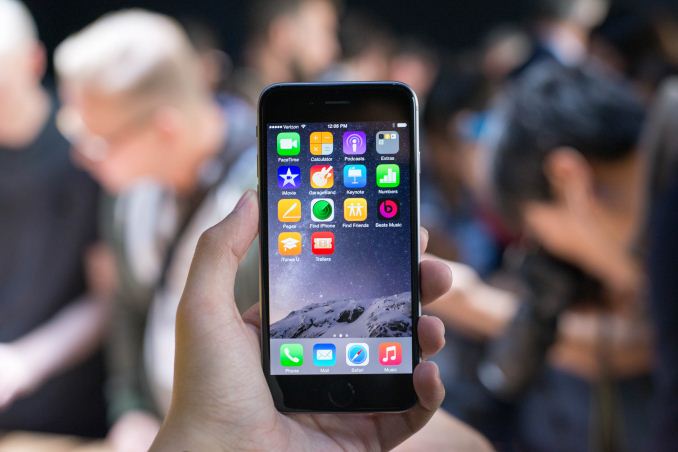
While we’re still working on the full review, I want to get out some preliminary results for the iPhone 6. For now, this means some basic performance data and battery life, which include browser benchmarks, game-type benchmarks, and our standard web browsing battery life test. There’s definitely a lot more to talk about for this phone, but this should give an idea of what to expect in the full review. To start, we'll look at the browser benchmarks, which can serve as a relatively useful proxy for CPU performance.
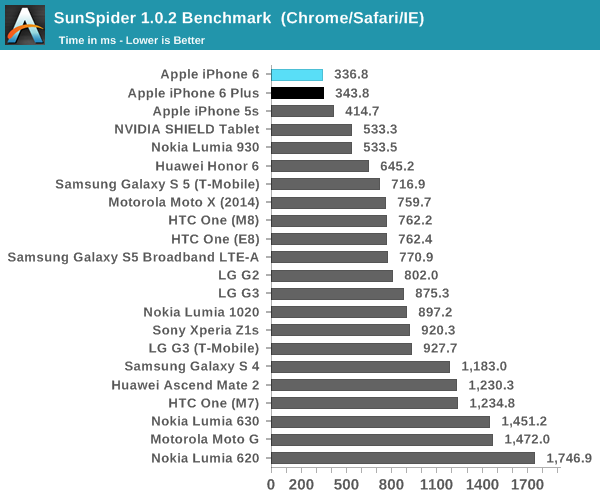
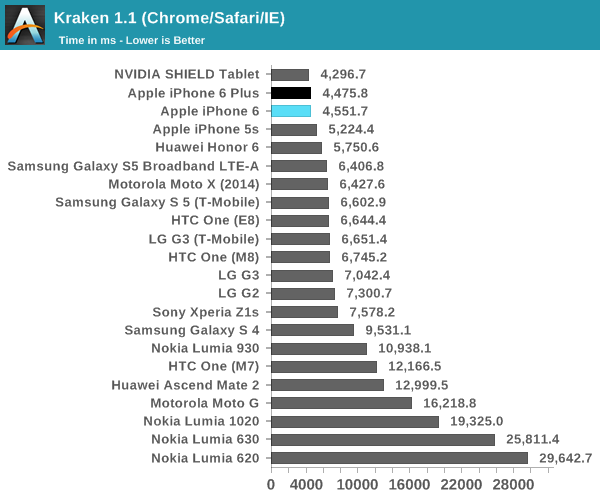
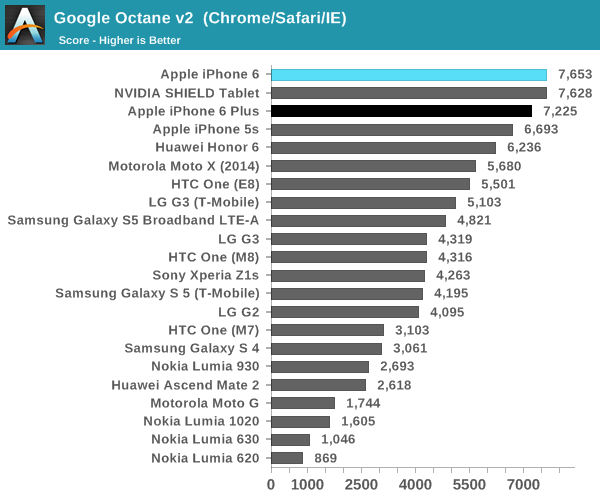
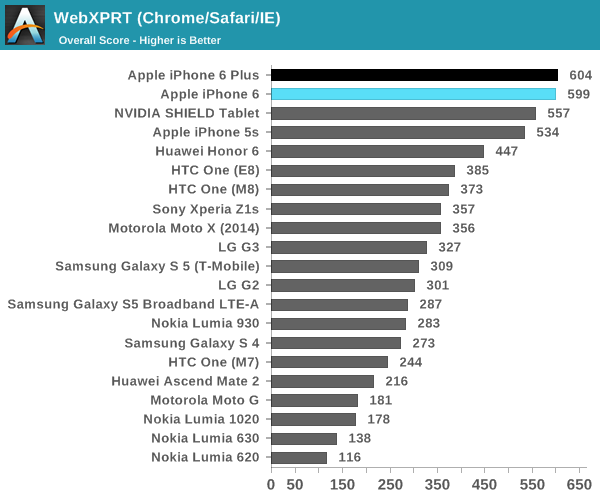
There are a few interesting observations here, as a great deal of the scaling is above what one would expect from the minor frequency bump when comparing A7 and A8. In SunSpider, we see about a 13% increase in performance that can't be explained by frequency increases alone. For Kraken, this change is around 7.5%, and we see a similar trend across the board for the rest of these tests. This points towards a relatively similar underlying architecture, although it's still too early to tell how much changes between the A7 and A8 CPU architectures. Next, we'll look at GPU performance in 3DMark and GFXBench, although we're still working on figuring out the exact GPU in A8.
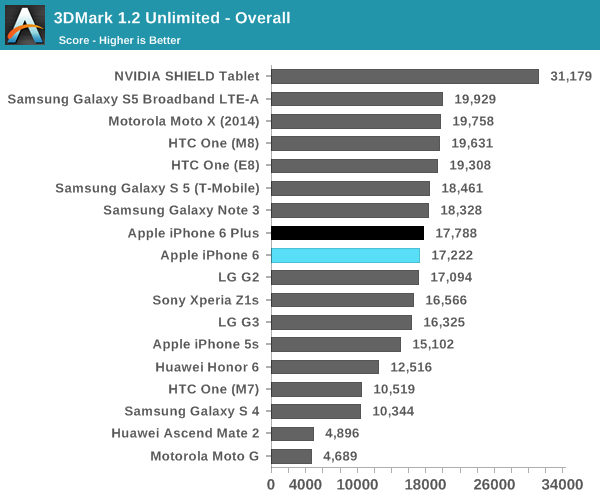
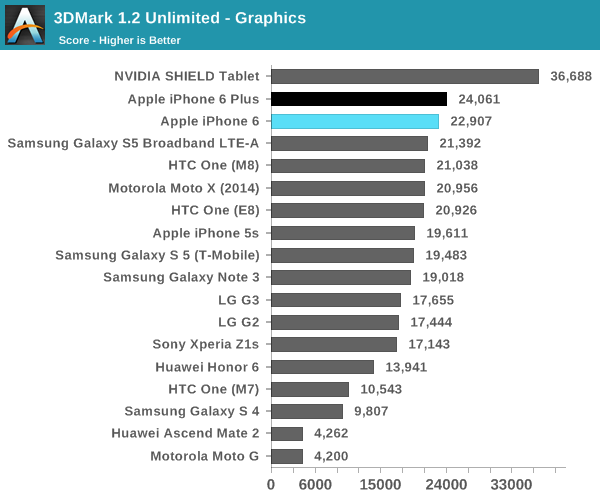
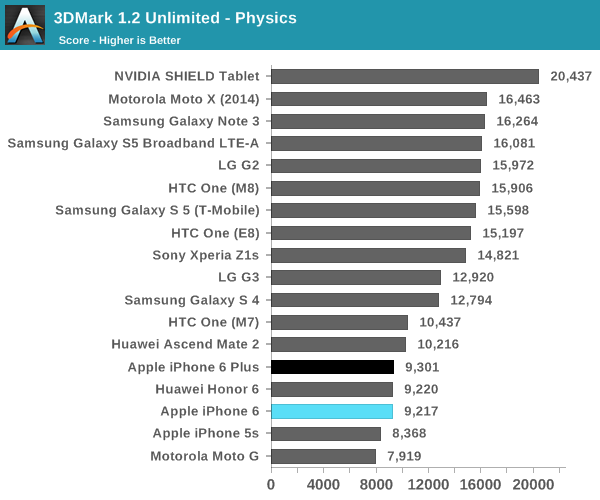
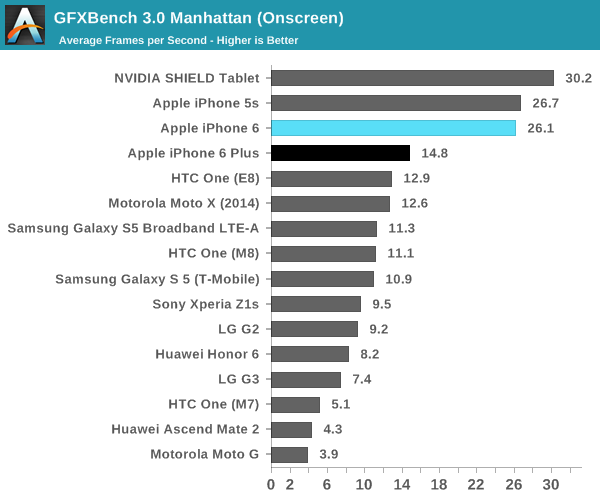
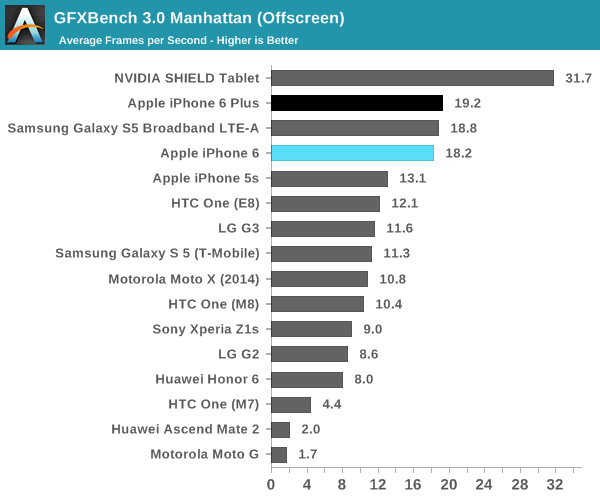
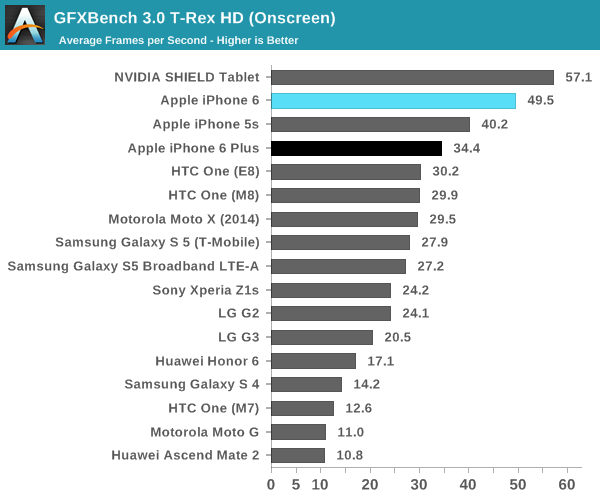
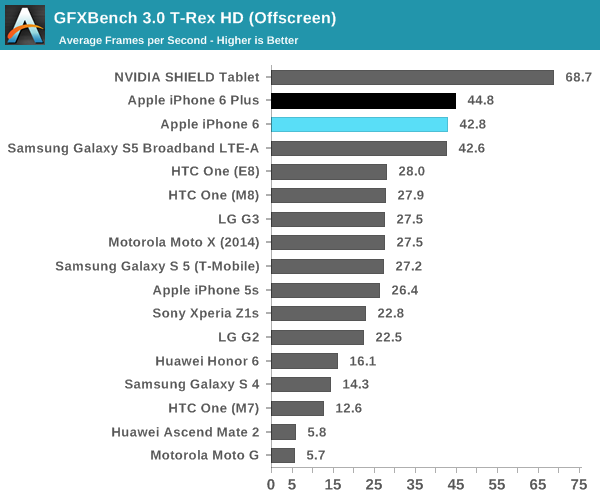
In in GPU benchmarks, we generally see a pretty solid lead over the competition for the iPhone 6/A8. It's seems quite clear that there is a significant impact to GPU performance in the iPhone 6 Plus due to the 2208x1242 resolution that all content is rendered at. It seems that this is necessary though, as the rendering system for iOS cannot easily adapt to arbitrary resolutions and display sizes. Before we wrap up this article though, I definitely need to address battery life. As with all of our battery life tests, we standardize on 200 nits and ensure that our workload in the web browsing test has a reasonable amount of time in all power states of an SoC.

As one can see, it seems that Apple has managed to do something quite incredible with battery life. Normally an 1810 mAh battery with 3.82V nominal voltage would be quite a poor performer, but the iPhone 6 is a step above just about every other Android smartphone on the market. The iPhone 6 Plus also has a strong showing, although not quite delivering outrageous levels of battery life the way the Ascend Mate 2 does. That's it for now, but the full review should be coming in the near future.










316 Comments
View All Comments
Impulses - Monday, September 22, 2014 - link
I can get 4-5 hours under Wi-Fi in real world conditions with brightness on auto and all kinds of background stuff, I'm not surprised their controlled/standardized test can double that on lower brightness and a clean environment.As others said tho, the point isn't to show you real world results anyway, the point is to compare hardware on as level a playing field as possible in a repeatable and precise way.
Anandtech's numbers are only good for comparing against Anandtech's numbers, but that's true of many precise and repeatable benchmarks or tests on many site/publication regardless of the product we're talking about.
I don't compare Tyll's FR graphs for headphones from those from Headroom and I don't compare Top Gear's tests with Car & Driver's. I still value both, but cross comparison is pointless.
The Hardcard - Monday, September 22, 2014 - link
Do you have a scientific assessment of why the PhoneArena measurement is more valid and accurate? Or is it just, "I want the iPhone to be worse."We do have a difference. Not the same as rigged. Plus, even if one is rigged, how do you know which one was? I plan to wait for more info as to where things stand.
zunjae - Monday, September 22, 2014 - link
It depends on your usage. I have a Galaxy S5 and I may be use it different than you. Did you know the iphone can last 5+ days? Some android phones can only last 3 hoursminifi - Monday, September 22, 2014 - link
I hope you posted your comment (in a rephrased version and a link to this article) under the Phonearena article as well!? :)Narg - Monday, September 22, 2014 - link
As far as Phone Arena is concerned, one test is statistically invalid. Poor math, really poor math. Anandtech shines again on their great testing abilities.tehdef - Monday, September 22, 2014 - link
And? They don't disclose their testing methods and every device runs differently.Furthermore, it's been noted by people who have an iPhone 6 while at crowded cellular locations like Disneyland that through extensive usage they got 1 full day and had over 30% remaining when they plugged in at 11pm. The 6+ got through 2 full days with 13% left.
I don't trust PhoneArena. They simply don't disclose their testing methods. They don't talk about screen brightness, type of connection, etc. It's honestly ... bad journalism and reviewing on their behalf. It's why everyone trusts ArsTech and AnAndTech over every other blog.
blacks329 - Monday, September 22, 2014 - link
Another thing that I find none of these other site's battery tests seem to account for is actual screen brightness. Anandtech has always used 200 nits as it's baseline brightness for all phones in its testing. Some sites don't even mention the brightness they use for testing while others say 'we had the phone at about 50% brightness,' which is also kind of useless. The iPhone 6's get over 500 nits, where as some other phone might get 400 and some odd nits at max brightness and the 50% level of each is not comparable!If there's anyones battery life #'s I'm generally using as a good guage (because it's always a YMMV situation) it's AnandTech.
victorson - Sunday, September 28, 2014 - link
A PhoneArena writer here. We do disclose our battery testing method: all our tests are run with device displays set at 200 nits, and we run a script that simulates real world test (we have looked at average use stats and how much activities draw, and simulate this via a web script), looping it at a set interval. Test results are fairly consistent and in the iPhone 6 case we have run the test more than three times to ensure the results are indeed correct. As to the difference with AT's results - I'd just say different testing methods.Kureno - Monday, September 22, 2014 - link
Would like to see the results of those benchmarks once 3Dmark utilizes MetalNarg - Monday, September 22, 2014 - link
Two thumbs up on that comment! But, it'll take time for developers to move there.